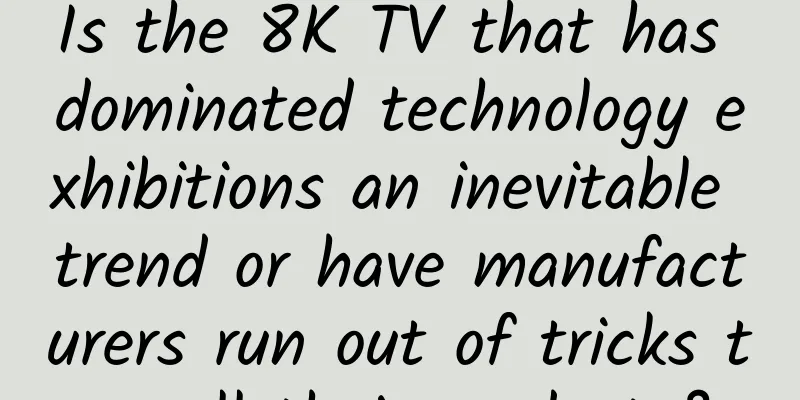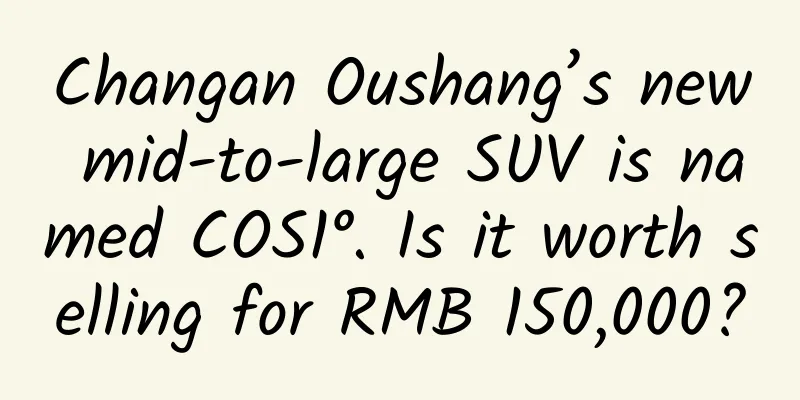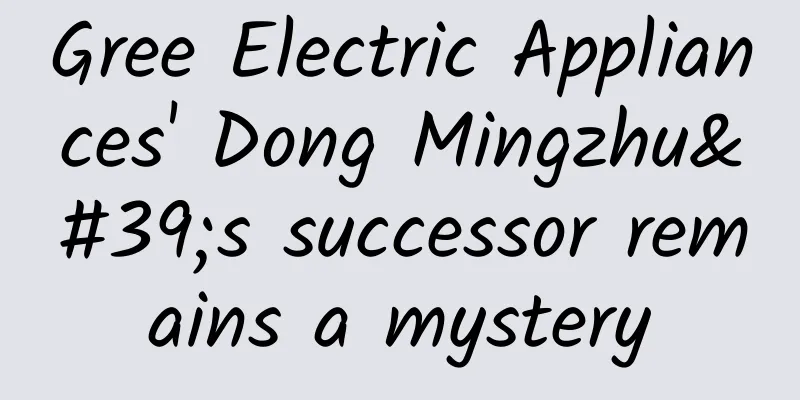Tesla's new car order users will not be able to use the Supercharger for free

|
Recently, Tesla officially announced that users who ordered cars after January 1, 2017 can no longer use the Supercharger network for free. Since entering China, Tesla has promised to provide a permanent free charging network as an important part of the subsequent service for users. Compared with the expensive fuel consumption cost, free charging is an important bargaining chip to attract customers. Although Tesla still provides 400 kWh of electricity to new users for free every year, which is enough to fully charge a Tesla Model S for about 1,600 kilometers, compared with the previous unlimited number of times, car owners generally believe that the amount of electricity available for free charging is too little. As a new generation of entrepreneurial myth, Tesla, which just entered the Chinese market three years ago, was once highly anticipated: with its modern design, ideal range, and a network of charging facilities that can be used free of charge for life, Tesla attracted countless fans as soon as it entered China. Although Tesla has made a certain leap in both product quantity and charging pile service three years later, after several rounds of personnel changes, its popularity in China has gradually faded, and its sales situation has faced several challenges. Some analysts said that Tesla's charging for charging services this time not only reflects the cost pressure faced by Tesla, but also will be more conducive to the competition in the charging pile market. Charging pile trouble Since 2016, Tesla has been particularly persistent in charging fees, and most of the charging items are centered around charging piles. Following the charging fee, Tesla announced on December 17, 2016 that it would charge "overtime occupancy fees" to car owners who continue to occupy charging piles after fully charging. The fee in mainland China is 2.6 yuan per minute, and there is no upper limit on the fee. In the details, Tesla officials stated that the "overtime occupancy fee" will be charged after the car is fully charged, and it will be waived if you leave within five minutes. Many car owners think that the five-minute moving time is too short, and the parking fee is too high. It takes 80 minutes to fully charge a Tesla Model S, and the owner will inevitably need to rest or handle other matters during this time. If you are delayed for an hour, you will be charged a parking fee of 156 yuan. One car owner said: "Some Tesla charging stations are in the wilderness. If you are delayed to go to the toilet, you may have to pay a sky-high parking fee." Tesla's charging methods are not limited to this. According to media reports, the low-end Model S 60 sold by Tesla previously required an additional fee of $2,500 to use the supercharging station for free. The charging station usage fee collected in 2017 was also only levied on customers who ordered cars after 2017, while old customers were exempted. Differential treatment of customers seems to have become the norm for Tesla's charging. The reason behind the various charging methods is that the operating costs of supercharging stations are constantly rising. Currently, the number of Model 3 reservations has reached 373,000, and the charging station capacity is obviously insufficient, while the expansion of new charging piles is also obviously lagging behind. In July 2016, Tesla's 100th supercharging station was opened for use in Beijing China World Trade Center, but according to the plan, this should have been completed before 2015. At present, Tesla has more than 100 super charging stations, 502 super charging piles and more than 1,400 destination charging piles in 72 cities across the country, including Lhasa, Daocheng Yading, Qingdao, etc. However, the Times Weekly reporter interviewed the official person in charge of Tesla China, who did not give a detailed super charging station construction plan for 2017, but only said that "this data is still increasing." The gap between the delay in the construction of Tesla's super charging stations and the speed of its order expansion has become a shortcoming of Tesla's service, and they are going to solve it by charging fees, which has affected the mood of car owners. Mr. Cao, a Tesla Model X owner, told the Times Weekly reporter: "One of the reasons for buying the car was that even if the car was expensive, it was still cost-effective to save money on gas, but now the policy has changed, which may be a blow to consumers who are going to buy Model 3." Tesla recently announced that it is going to solve the problem by promoting adapters and higher-power charging stations. However, independent automotive consultant Zhang Xiang told reporters: "Most car owners need to go to super charging piles to charge because they want to be quick and free. The current domestic charging piles are slow charging, which takes more than ten hours, and will not bring much relief." At the same time, Zhang Xiang also told reporters that the power of the 350kw charging pile is too large, and it is difficult for various departments to coordinate. In this regard, the Times Weekly reporter contacted Cao Tongli, the marketing director of the new energy business department of Shandong Luneng Intelligent Technology Co., Ltd. He believes that this is a systematic issue, involving the issue of local power distribution planning and capacity expansion, which requires the planning of the distribution network to be taken into consideration. A more basic distribution network must keep up. "Many old residential areas have problems with their own power supply. If a Tesla charging station is placed with high power, it will not work at all," he said. The increase in charges not only reflects the pressure on Tesla's charging services, but also reveals Tesla's new understanding of the charging business. The problem of national standard transformation Tesla is using the European standard charging interface, which is not compatible with the national standard charger, but this did not cause many problems in the early stages of development. In December 2015, the General Administration of Quality Supervision, Inspection and Quarantine, the National Standards Committee, together with the National Energy Administration, the Ministry of Industry and Information Technology, the Ministry of Science and Technology and other departments, revised five national standards for electric vehicle charging interfaces and communication protocols (referred to as the "new national standards"). The standard sets clear technical requirements for charging safety and compatibility, and has been implemented since January 1, 2016. As late as November 18, 2016, Tesla officially released a charging adapter that complies with China's new national standards at the 2016 Guangzhou International Auto Show, and listed two charging service providers that comply with the new national standards on its official website: Beijing Huashang Sanyou New Energy Technology Co., Ltd. and Shandong Luneng Intelligent Technology Co., Ltd. So a project called "Tesla Charging Partner Program" was born. The purpose of this project is that Tesla will select a group of companies from charging facility companies that have obtained CQC certification, and then produce adapters that can adapt to the charging piles of these companies. In addition to the charging port, Tesla also has many facilities that are inconsistent with the new national standard. For example, the new regulations clearly stipulate that charging methods greater than 15 amperes require the installation of electronic locks, but Tesla's super charging piles do not have them. In addition, the Times Weekly reporter visited many Tesla super charging piles and did not see the charging pile start-up emergency stop switch commonly used in the industry to avoid accidents. This also means that among the 84 Supercharging Stations, 320 Supercharging Pile and more than 1,600 destination charging piles built by Tesla before the new national standard, those charging devices that do not comply with the new national standard are facing the challenge of transformation. Fortunately, on December 20, 2016, the National Development and Reform Commission, the National Energy Administration and the Ministry of Industry and Information Technology issued the "Implementation Plan for the New National Standard for Electric Vehicle Charging Infrastructure Interfaces". In addition to re-emphasizing that newly installed charging infrastructure and electric vehicles must comply with the new national standard, the plan also gave a time limit for the renovation of charging facilities - "strive to complete the renovation task before December 31, 2017". However, Tesla seems to have not taken any action on whether to change, how to change, and how much it will cost. As an important part of Tesla's service closed loop, Supercharger Stations have brought Tesla customers' trust and orders. The U.S. Consumer Reports has just released its "Annual Owner Satisfaction Survey", in which Tesla topped the list with a high score, and the layout of Tesla's charging stations has contributed greatly to this. The difficulty of modifying charging piles according to national standards has been recognized in the industry. In addition to the physical facilities, the power supply protocols and power standards are also different. Dr. Zhang Xiang, an independent automotive consultant, told the Times Weekly reporter: "It is very difficult to modify in the box. I am afraid that the only way is to modify it outside, or replace it completely." New opportunities in the charging market As Tesla's sales surge, it is becoming increasingly difficult to provide charging services on its own. Coupled with the recently introduced charging policy, some Tesla owners' charging needs will flow to other charging service providers on the market. This is the significance of Tesla's release of the conversion interface. Generally speaking, a complete charging system includes charging piles, power distribution, and monitoring systems, and can also generate other service billing, such as installation and maintenance. Technically speaking, it is not difficult to implement. If we imagine charging piles as the entry point, this market may include charging, advertising, insurance, finance, car sales, 4S value-added services, and automotive industry big data, which is the biggest attraction of charging services. On the other hand, the country is also open to charging pile services. According to Cao Tongli, "This market is currently open to the outside world, but the State Grid still accounts for the majority of investment. Whether it is the charging station market, the charging service market or the purchase and sale of charging equipment, there is no threshold, as long as it meets the national requirements, there is no problem." Jia Xuefeng, CEO of Judian Network, a charging station technology service provider, told reporters: "Tesla's charging is a great benefit to service providers like us." Now their service targets all car models, unlike Tesla, which prioritizes its own brand. "We can't rely entirely on car companies to build charging stations. First, the main business of car companies is not here; second, the whole machine factory with its own brand car generally prioritizes its own brand service. So for car companies, they need third parties to solve sales and after-sales problems." There are more and more domestic charging service providers. According to Wang Binggang, leader of the National 863 Plan Energy-Saving and New Energy Vehicle Major Project Supervision and Consulting Expert Group, by 2020, the domestic charging pile (station) market size will exceed 1 trillion yuan. This will be a huge opportunity. As a winner of Toutiao's Qingyun Plan and Baijiahao's Bai+ Plan, the 2019 Baidu Digital Author of the Year, the Baijiahao's Most Popular Author in the Technology Field, the 2019 Sogou Technology and Culture Author, and the 2021 Baijiahao Quarterly Influential Creator, he has won many awards, including the 2013 Sohu Best Industry Media Person, the 2015 China New Media Entrepreneurship Competition Beijing Third Place, the 2015 Guangmang Experience Award, the 2015 China New Media Entrepreneurship Competition Finals Third Place, and the 2018 Baidu Dynamic Annual Powerful Celebrity. |
>>: The difficulty in reducing car weight lies in the manufacturer's facilities
Recommend
Hardcore test: 41 out of 50 mainstream apps are "peeking" at your clipboard
30 seconds quick read 1. Before the official vers...
Tesla official: Shanghai Super Factory's annual delivery volume will exceed 916,000 vehicles in 2024
In the past year of 2024, the Shanghai Super Fact...
Is it expensive to produce Wuxi furniture mini program? Wuxi furniture applet production cost list
The mini program provides convenience for publici...
Is it worth doing B Station’s content e-commerce + live streaming sales?
Bilibili , which just released its financial repo...
FDD 4G commercial trial: What do China Telecom, China Unicom and China Mobile think?
At the Tianyi Mobile Phone Trade Fair, when China ...
How much does it cost to create a ticketing mini program in Pingdingshan?
According to industry insiders, mini programs wil...
LG's first 2K screen mobile phone preview
Yesterday, LG's first 2K screen mobile phone i...
What are the SEO marketing methods?
As the saying goes, "Even good wine needs to...
Kirin Society novel becomes combat class (completed)
Qilinshe VIP paid project course "Novel into...
Smart driving for all, the ultimate king bomb! The second-generation Yuan PLUS Smart Driving Edition starts at 115,800 yuan and has been reduced in price!
On March 5, BYD's second-generation Yuan PLUS...
KOL usage guide: 6 practical marketing experiences!
Where there are people, there is the world; where...
5 key points and 15 operation steps for live broadcast operation!
When operating Douyin live broadcast , we need to...
Taking stock of the "history of the operational war between Tik Tok and Kuaishou"!
How do you evaluate the operation of Douyin ? Thi...
Can sleep-aiding aromatherapy really cure insomnia? Don’t believe it anymore because…
“Sleep-aiding aromatherapy can cure insomnia.” Th...
Taking APP as an example, let’s share a data idea of advertising placement
The three core indicators of product operation ar...









